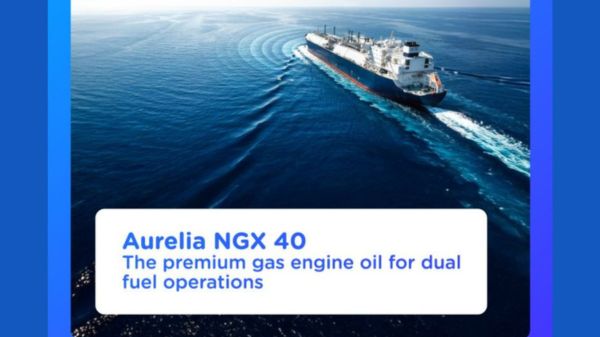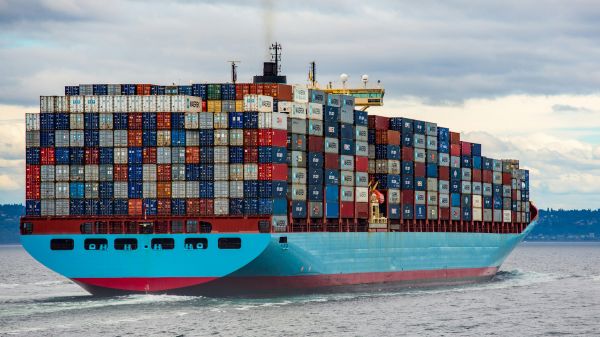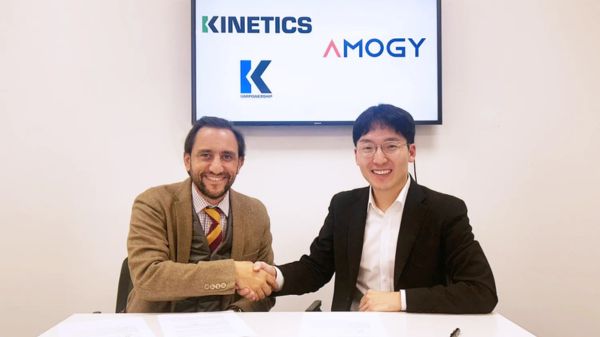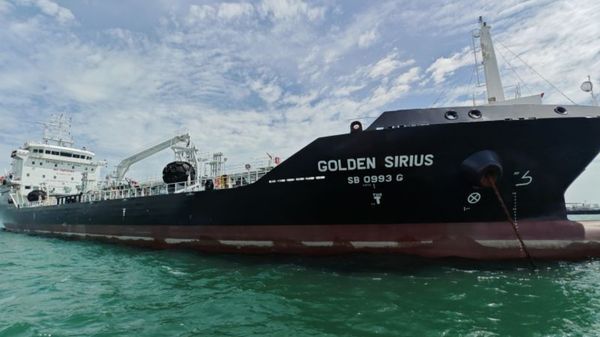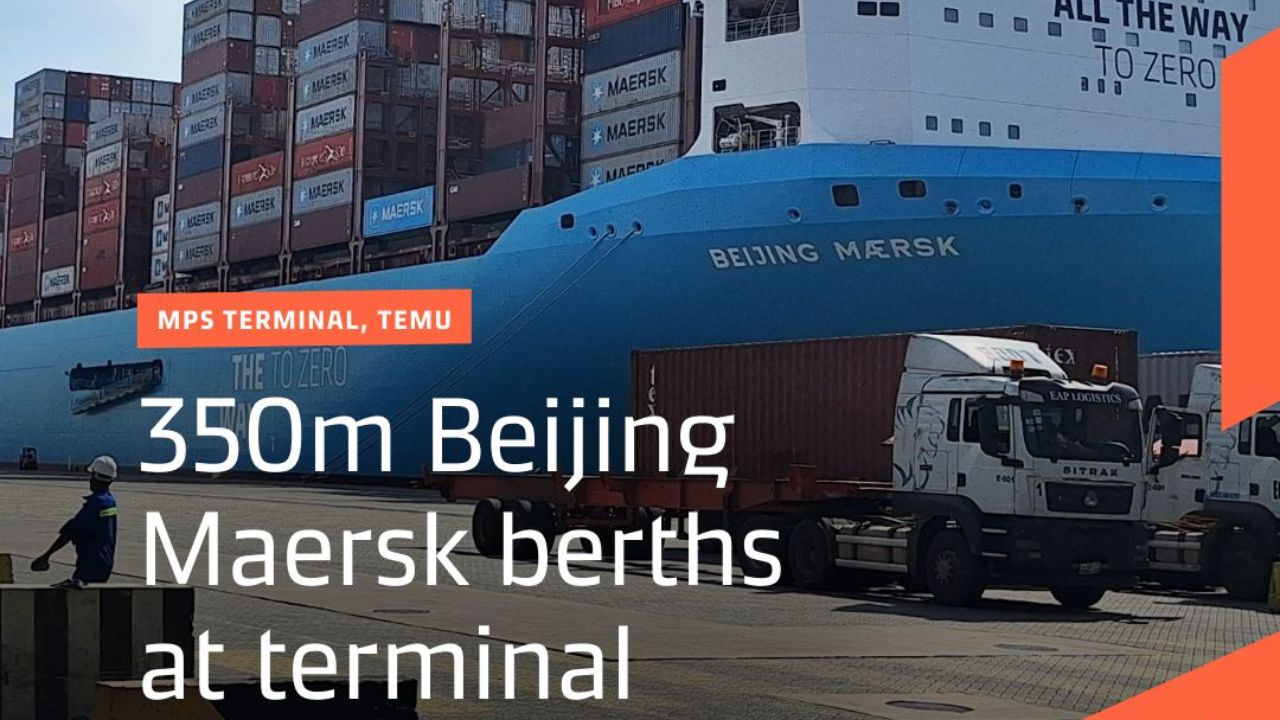Overall confidence levels in the shipping industry fell slightly during the three-month period to May 2014 but remain at their second-highest level for the past six years, according to the latest Shipping Confidence Survey from international accountant and shipping adviser Moore Stephens. Expectations of new investment were maintained over the three-month period, but the prospect for higher freight rates softened in the tanker and dry bulk sectors. Uncertainty over the likely effect of an increase in private equity funding, and the consequent potential impact on tonnage supply, meanwhile dominated the thoughts of respondents to the survey.
In May 2014, the average confidence level expressed by respondents in the markets in which they operate was 6.3 on a scale of 1 (low) to 10 (high), compared to the 6.5 recorded in February 2014, which was the highest figure since the 6.8 recorded when the survey was launched in May 2008.
Ship managers (up from 6.4 in the previous survey to 6.5 this time) were the only category of main respondent to report an increase in confidence. Owners (down from 6.6 to 6.1), charterers (down from 6.5 to 6.1) and brokers (down from 6.4 to 6.0) were less confident than they were three months previously.
Geographically, confidence was stable in Asia at 6.4, but down in Europe and in North America, from 6.4 to 6.2 and from 7.1 to 6.5, respectively.
Despite the small overall decline in confidence levels, a number of respondents to the survey remained upbeat. “Levels of confidence are good, and are expected to improve,” said one, while another noted, “World trade seems to be improving, and shipping will benefit.” Others were slightly more guarded in their responses, however. One respondent said, “The market is improving, but there are still some smaller, financially weak companies likely to go bust.” Another observed, “We have noted slight improvements in the market and are confident that more significant growth will take place in the coming months,” while others still remarked, “Demand is still high, even though operational costs have tended to increase,” and, “The shipping markets are not stable at the moment, but will pick up shortly.”
“Confidence is lower today than at the start of the year, but still reasonably optimistic going forward,” said one respondent. “Some believe we are sailing out of the doldrums, while others believe we will never get out. Interesting times!” Another noted, “The market has improved slightly, but certainly not enough to start drinking champagne. The next few years will be difficult, and maybe the real recovery will be too little and come too late for some owners.”
Elsewhere it was noted, “The market has held up for longer in 2014 than it has in the past few years, but one can sense that it is slowing down now. Hopefully, though, we are now seeing the results of more vessels being scrapped, and rates should be more robust and won’t tumble over the quieter summer months.” Similarly, another respondent said, “Shipping is moving slowly at the moment and will continue in that vein over the summer months before increasing pace again later in the year.”
Concern about overtonnaging, meanwhile, continued apace. “The market is a little more stable, said one respondent, “but we need to stop ordering newbuildings, particularly in the medium-range tanker and platform supply vessel sectors.” Of like mind, another respondent cautioned, “The future is uncertain due to the fact that owners are still ordering too many ships. Also, economic factors are changing trade patterns once more, and the markets are likely to remain volatile, with a tendency towards downward movement, until 2016 and beyond.”
Continuing the theme, another respondent warned, “Concerns are growing about the number of newbuildings relative to the size of the existing fleet,” while another still emphasised, “We must not have large numbers of orders for new ships for the next two years, at least.” Summing up the feelings of a number of others, one respondent warned, “An improvement in the freight markets is long overdue, but more new tonnage is on order despite the general consensus that there is already an over-supply.” Offering a slightly different slant on the situation, it was observed elsewhere that, “A lot will depend on developments in the Far East, and on the ability of Chinese shipyards to meet their orderbooks in timely fashion and to be able to assist with financing.”
The increasing availability of non-traditional ship finance, and of private equity funding in particular, dominated the thoughts of a number of respondents. One said, “The biggest risk is that uneducated and inexperienced new capital is available to the industry, which could lead to a new period of over-supply.” In similar vein, another remarked, “A high degree of uncertainty hangs over the supply side equation, with private equity keen to engage, and the continuing risk of state-sponsored ordering.”
Elsewhere it was noted, “Thankfully, the IPO window seems to have closed slightly, but any reactivation on the part of private equity companies, or further investment in new ships by public companies, will be very detrimental in the long term to shipping markets. Collective lessons have not been learned. As long as interest rates are low and money is cheap, hard assets will be sought and once again too many ships will be built and in the process lay the foundations for a very depressed market for years ahead.” Another respondent emphasised, “Amid ongoing overcapacity, the trend towards private equity and other non-traditional ship finance significantly threatens any recovery which may otherwise materialise from stronger forward demand trends.”
“The increasing involvement of ‘other people’s money’,” it was noted elsewhere, “has been a major factor in the newbuilding order splurge over the last nine months. Will seaborne trade growth in the underlying major commodities support this, or is the industry suffering from another of its bouts of wishful thinking?” One respondent referred to the entry into the market of “speculators who will drive up order books and subsequently increase overcapacity,” while another warned, “Short-term, non-shipping investors ordering new ships, some with other people’s money, will increase tonnage supply for years to come.” Finally, it was noted, “We have a new brand of so-called owners, or rather investors ordering tonnage on the basis of spur-of-the-moment decisions.”
The likelihood of respondents making a major investment or significant development over the next twelve months was unchanged on the previous survey, on a scale of 1 to 10, at 5.8, which equals the highest figure since the rating of 6.0 recorded in August 2010. The figure for managers was up on last time, from 6.0 to 6.2, and for charterers, from 6.3 to 6.4. But owners were slightly down on last time, from 5.9 to 5.8, as were brokers, from 5.4 to 5.2.
Sixty-eight per cent per cent of charterers (up from 50 per cent last time) rated the likelihood of making a new investment over the next twelve months at 7.0 out of 10.0 or higher. The numbers of owners and managers of like mind were 43 per cent and 56 per cent respectively, up on the corresponding figures of 47 per cent and 43 per cent last time.
Geographically, expectation levels of major investments were up in Asia, from 5.7 to 5.9 (the highest figure for four years), but down in Europe, from 5.8 to 5.7. Meanwhile, there was an increase, from 5.1 to 5.9, in North America, where 62 per cent of respondents rated the likelihood of making a new investment over the next twelve months at 7.0 out of 10.0 or higher.
One respondent said, “Recent new investment in over-built shipping asset classes represents a threat to shipping,” while another noted, “Potential buyers are finding it difficult to secure loans to buy ships.”
Demand trends, competition and finance costs once again featured as the top three factors cited by respondents overall as those likely to influence performance most significantly over the coming twelve months. The overall number for demand trends was up by 2 percentage points to 23 per cent, while competition was up by one percentage point to 20 per cent. Meanwhile, the number of respondents citing finance costs fell from 16 per cent to 15 per cent. Tonnage supply (unchanged at 13 per cent) featured in fourth place, while operating costs (down from 11 per cent to 10 per cent) and fuel costs (up one percentage point to 10 per cent) featured in equal fifth place.
Demand trends, up 5 percentage points to 27 per cent, remained the number one performance-affecting factor for owners. Finance costs, down 3 percentage point to 15 per cent, were replaced in second position by tonnage supply, unchanged at 17 per cent. For managers, meanwhile, competition (up 2 percentage points to 21 per cent) remained in first place. Operating costs, down 2 percentage points to 14 per cent, dropped to third place behind finance costs, unchanged at 15 per cent. For charterers, demand trends, up from 22 per cent to 30 per cent, featured in first place, ahead of competition (21 per cent) and finance costs (16 per cent).
Geographically, demand trends were the most significant factor for respondents in Asia (up from 20 per cent to 22 per cent), Europe (up 2 percentage points to 24 per cent) and North America (down from 24 per cent to 21 per cent). Competition was the second most significant performance-affecting factor in Asia (down one percentage point to 19 per cent), Europe (up from 18 per cent to 19 per cent), and North America (down from 23 per cent to 17 per cent). In Asia and North America, finance costs featured in third place, while for Europe that slot was occupied by tonnage supply.
One respondent noted, “The cost of paying and retaining professional staff remains high.” Another remarked, “The most alarming thing is the poor quality of crew.” A number of respondents were concerned about the cost of meeting regulatory requirements. One said, “Sulphur emissions restrictions and potential ballast water management systems costs are major challenges for the near future.”
The number of respondents overall who expected finance costs to increase over the next twelve months was unchanged at 41 per cent. The number of respondents expecting finance costs to come down, meanwhile, rose from 6 per cent to 13 per cent, the highest figure since August 2010. Managers were the only main category to record a fall in the numbers of respondents expecting higher finance costs (down from 42 per cent to 39 per cent). The figure for owners was up from 38 per cent to 42 per cent, for brokers from 39 per cent to 50 per cent, and for charterers from 35 per cent to 48 per cent.
The number of respondents in Asia anticipating an increase in the cost of finance was up by 8 percentage points to 56 per cent, while in Europe the numbers were down from 37 per cent to 34 per cent. In North America, meanwhile, the numbers anticipating higher finance costs rose from 29 per cent to 62 per cent.
“The banks need to change their policy,” said one respondent. “They have to support shipping, the biggest transport industry in the world, and lend against secondhand assets.” Another observed, “There is a lack of belief in the banking system.”
Turning to the freight markets, there was a fall in the number of respondents anticipating higher rates in the tanker and dry bulk trades, while expectations in the container ship sector remained unchanged from last time.
The number of respondents overall who expressed an expectation of higher rates in the tanker sector over the next twelve months was down by 2 percentage points to 41 per cent, which is nevertheless the second-highest figure since May 2011. Charterers recorded a 29 per cent fall in this regard, from 50 per cent to 21 per cent, while owners’ expectations were also down, from 42 per cent to 37 per cent. Brokers and managers, meanwhile, were more confident, their expectations of higher tanker rates increasing by 12 and 3 percentage points respectively to figures of 48 per cent and 46 per cent.
Geographically, the prospects for increased tanker rates were deemed lower this time by respondents in Asia (down from 43 per cent to 40 per cent), and in Europe (down from 43 per cent to 41 per cent). In North America, however, there was a 29 percentage-point increase to 50 per cent.
One respondent maintained, “The tanker and bulk carrier sectors are heavily influenced by low trading demand, and most trading routes worldwide are currently overtonnaged.” Another said, “There are too many newbuildings scheduled for delivery in the medium-range tanker sector.” Elsewhere it was noted, “The effects of rapid political developments within the EU have been under-estimated, and this will have an impact on tanker activity in the Western Europe/Mediterranean range.”
In the dry bulk sector, meanwhile, there was a 5 percentage-point fall, to 53 per cent, in the overall numbers of those anticipating rate increases. Just 42 per cent of charterers, compared to the survey high of 76 per cent last time, thought that rates would increase over the coming year. The numbers for owners were also down (from 59 per cent to 57), as were those for managers (from 57 per cent to 45 per cent) and brokers (from 62 per cent to 59 per cent. Expectations of higher dry bulk rates over the next twelve months were unchanged in Asia at 49 per cent, down in Europe from 64 per cent to 55 per cent, but up in North America from 47 per cent to 64 per cent.
One respondent said, “We are quite confident that, in the coming months, the dry cargo market overall will slowly but surely improve, after about six years of crisis.” Elsewhere it was noted, “The orderbook for bulk carriers is still quite high, but we believe there will be more scrapping due to the inefficiency of main engines, the price of fuel and the cost of retrofitting scrubbers.”
In the container ship market, meanwhile, the number of respondents expecting rates to increase over the coming twelve months was unchanged at 34 per cent. All main categories of respondent, with the exception of charterers, were more confident of rate increases this time than they were three months ago, with owners up from 34 per cent to 36 per cent, managers up from 33 per cent to 35 per cent, and brokers from 36 per cent to 41 per cent. For charterers, however, the figure was down from 50 per cent to 46 per cent.
Geographically, expectations of improved container ship rates were unchanged at 38 per cent in Asia, and up in Europe (from 31 per cent to 32 per cent) and in North America (from 27 per cent to 30 per cent).
Moore Stephens shipping partner, Richard Greiner, says, “The small dip in confidence revealed by the latest survey is a disappointment. But it has to be viewed in context. Confidence is still at its second-highest level for four years, and the number of respondents planning to make a major investment over the next twelve months is as high as it has been at any time since August 2010. It is difficult to think of another industry, similarly exposed to political, commercial, economic and environmental pressures, which has retained the confidence of its customers and investors to the same degree.
“Ironically, it is the willingness of investors – and new investors, at that – to put their money into shipping which may lie behind the recent small dip in confidence. Private equity funding dominated the comments of respondents to an extent seldom seen in connection with any other issue during the six-year life of the survey to date. Many see the growth of private equity finance in shipping as a threat to longer-term viability. It is true that this type of funding is likely to be short-term by shipping industry standards, and shipping is an industry which best rewards long-term investors. But, in the absence of sufficient bank funding of the type which has been the traditional mainstay of shipping finance over the years, other options are required to bridge the gap.
“Shipping is a recovering market which has proved its resilience. This is bound to attract interest from new, outside investors. That will not sit well with those who believe that shipping should be financed by shipping people and their banks. But there have already been a number of recent examples of successful shipping companies being formed by private equity investors at a low point in the shipping cycle. It may be that the recent easing of asset prices will be seen by private equity as an opportunity for further investment in shipping.
“The fact is that shipping needs new investment, and that can no longer be provided solely by the banks. Those who fear the repercussions of going into business with investors who don’t know the shipping industry should seek professional financial advice before making a commitment. Private equity investors who want to know more about shipping before taking the plunge, meanwhile, should do the same.
“Elsewhere, the survey revealed some familiar areas of concern, not least in connection with overtonnaging, and the effect that the entry into the market of large numbers of newbuildings will have on freight rates. Another recurring area of concern involves the cost of achieving regulatory compliance, in particular with the ballast water management convention, and of meeting the escalating cost of daily operation. These are the bread-and-butter issues of shipping, and bread and butter is expensive in today’s industry. They are also the issues that putative private equity investors will have to factor into their decision-making.
“Some people are already calling this period in the shipping cycle the recovery that never arrived. This works well as a sound-bite, but takes no account of the improved levels of confidence we have seen recently. Shipping industry confidence today is vastly improved compared to where it was five years ago. As one of our respondents noted, it may not yet to be time to break out the champagne. But neither is it time to subsist solely on beer.”

